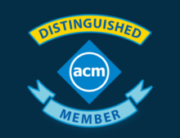To mark its 50th Anniversary (Ed: Congratulations ICS!!), the Irish Computer Society (ICS) is conducting a series of interviews and events throughout 2017 that speak to its achievements as a society and its plans for the future.
The first interview is with ICS CEO Jim Friars, providing a perspective on ICS today, its strategy and ambitions.
What has ICS’s goal been during your time here?
“During my time here, ICS has been trying to establish the IT profession, but it hasn’t aligned with traditional definitions until very recently. Many professionals have careers with IT elements, but a profession has well-defined criteria such as a code of ethics, an established body of knowledge, continuous professional development, and a set of competencies. Until recently, professionals were fulfilling IT roles in addition to their primary responsibilities.”
So what has changed in the past 15 years?
“Simply put, IT has matured, modelled on more stable professional career paths like engineering, medicine, and law. For IT, though, there is no single point of entry (e.g. a degree or an exam). It is far more dynamic, and it is constantly moving. Take coding as an example. Although it is what people typically associate with IT roles, coding only makes up approximately 30% of roles within the profession. But then there’s the other 70% – still IT, but far more diverse.”
How do you create a profession from something so diverse?
“The solution for us was to view IT as competency-based, and we adopted the European e-Competence Framework (e-CF) for this purpose. The ICS e-CF tool is an online portal of competencies that allows individuals to manage their Continuous Professional Development and career path objectives through targeted skill acquisition.
“The framework is an aggregate of all IT professionals’ skills across Europe. This makes it intuitive, adaptive and easy to adopt. Individuals can determine what skills they lack, how to acquire them, and what organisations are looking for them. They can set short-term or long-term goals for their career, and map them out precisely (e.g. reaching a CIO position in 10 years, or improving your design skills). Using a CPD system, they can then track and record their achievements more granularly.”
And how does this framework work within organisations?
“Once all employees are on the framework, an employer can quickly identify what skills are lacking and fill them proactively. Effective use of IT is facilitated by the timely acquisition of skills with a view creating business value.
“By employing the right people at the right time, and by maximising their potential through continuous professional development, the organisation and the employee will benefit. Having a real-time skills portfolio on-hand allows a company to align an employee’s personal goals to their long-term business goals and investments (e.g. investment in cloud technologies, VR/ AR, etc.).”
Has the e-CF been adopted beyond the traditional IT organisation?
“Yes. It is suitable not just for IT departments, but also for IT service providers and educational institutions, recruitment agencies, professional trainers, and other interested parties. If everyone maps the career path of the IT professional in the same way, it will standardise the IT career progression path and help it grow.”
“If 200 large organisations adopted the framework, we could then map the skills not just of a handful of organisations, but of the entire IT industry in Ireland. This feeds naturally back into the education sector (particularly 3rd level), where those skills gaps can be addressed directly through the design of curriculums and syllabi to meet industry needs.”
Can you offer some examples of how the e-CF and/ or a CPD system was adopted?
“While individual members in almost 1000 organisations are currently recording their CPD, we are engaged with over 40 organisations about adopting our CPD scheme. The attraction of CPD is that it is broad enough to allow for creativity in its implementation in different organisations. Particularly with our corporate members, we have seen vastly different implementation styles. Several organisations have incorporated the scheme into their training plans including ESB, Revenue and Liberty Insurance. SQS and Media Team have also been accredited to award CPD points within their organisations.”
How does the ICS CPD system work?
“Our CPD system has four categories: Formal, Informal, Non-formal and Contribution. Each time you participate in an activity, you earn points that are a measure of the duration spent and mapped to specific competencies in a particular area. An organisation can track the aggregate of these competencies and match them against strategic objectives for the year. These categories cover everything from formal training to conferences to mentoring and secondment. Similar to e-CF, if more organisations get on board, then that upskilling path is somewhat standardised for training providers. Supporting an organisation like ICS helps validate the CPD system, participation in the e-CF, and the future of the IT profession.”
Any final thoughts?
“The IT profession is growing faster than ever before. More than that, it is establishing its own identity through this competency-based approach. There is still a lot more to do, but a framework like this is a very important step forward. We are excited to see what the future of the IT profession will be – here’s to another 50 years!”
More information about the ICS CPD system can be found at www.ics.ie/cpd. Information on the European e-Competence Framework can be found at http://www.ecompetences.eu/.






